Barcelona. The locals are fanatical about their hometown, and tourists flock there like teenage boys to a wet t-shirt competition. I spent three hours on a high-speed train from Madrid, screaming through the Aragon region at 300km/h, imagining what the Spanish civil war fronts in the area would have looked like. The landscape between Spain’s capital and its Catalonian equal changes remarkably, and from each hill, mountain range and abandoned farmhouse, I sat with my face glued to the window (and not the Twilight movie playing inside the cabin….. why, Renfe, why?)
I got to Barcelona and experienced warmth! Yay! Madrid and the other locales of my trip had been mild at best. I got one of those taxi drivers who assumes you are a guiri who doesn’t know they are being taken the long way around to La Rambla. My hotel, Hotel Montecarlo, which is situated metres from a scene written by George Orwell made me feel better. My cheap single room was massive and offered a spa bath that I would never have time to use.
I read George Orwell’s Homage to Catalonia eons ago, when my knowledge of Spain was next to nil. I re-read the book a week before I landed on the Iberian peninsular, to re-acquaint myself with the man and the Barcelona he knew. Orwell’s frustration, and the overwhelming feeling that the Republican factions were all doomed to fail in the war, rang in my ears as I set off around the city on my own.
Carrer de Bisbe in the Barri Gótic
My goal for the afternoon was to visit Montjuïc Castle and do the self-guided Shadow of The Wind walk. Montjuïc Castle has amazing views of the sea and the city, second to none, and the cable car was good fun. There was an exhibition on Manuel Carrasco i Formiguera in one of the old prison cells. I was pleased to take a look through and the Catalan language didn’t get the better of me. In the middle of a pleasant afternoon, I was the only soul in there. That was the thing that struck me about Montjuïc – the level of tourists put me off. I was tourist too, so I couldn’t point the finger, but as I wandered the courtyard where famous figures of Catalonia and the civil war were imprisoned and killed, it was filled with people visiting the built-in cafes and gift shops. I got the impression that the soul of the place has been wiped. However, if you’re looking for a nice place to visit, by all means, see Montjuïc Castle and the sight-laden Montjuïc area, as some of it is excellent. But I didn’t find what I was looking for.
The former cell of Lluís Companys, once-leader of Catalonia, before he was taken out and shot, probably near where you can now buy a ‘I ❤ Barcelona’ shirt
I wandered the Barri Gòtic quarter, my Shadow of the Wind tour map etched into my memory. I wasn’t keen to take many photos (I have ‘done’ Barcelona before), but the swathes of people once again put me off. An evening out with a group for dinner and drinks was fun (great fun with The Barcelona Taste), but I still hadn’t found the Barcelona I was looking for.
The approximate fictional location of the Sempere & Sons bookstore and upstairs apartment in Shadow of the Wind
The next morning, I waited inside Café Zurich in Plaça Catalunya and watched holiday-makers using hand gestures to order breakfast. It was only 10am, yet the city heaved with tourists, many lined up to take the generic bus tour of the city (it could be an easy way of getting around the city if you needed to go to multiple places, however the commentary and delays could be annoying, I would imagine). But I knew my luck was about to change. Enter Nick Lloyd, who arrived right on time. Besides myself, another ten people, couples from all over the world, emerged from the crowds in search of a different Barcelona. A handful of years ago, I didn’t know the first thing about anarchism. It doesn’t sound pretty. However, I now subscribe to their way of thinking and, it seems, so do many others. We didn’t have to wait long before we could have our eyes opened to a whole different Barcelona.
Nick Lloyd is no foreigner in Spain. He may be English but has lived in Spain well over 20 years and you wouldn’t be able to find someone as well-versed on the history of Barcelona, and I am confident there isn’t another person as enthusiastic about its colourful past, either. A quick introduction to one another, and then we stood on the corner of Plaça Catalunya in the shade of the Catalunya a Francesc Macià monument. Despite the frenetic location, Barcelona was allowed to come to life. The nerd in me jumped right in; Nick pointed out a few landmarks which had me happily squealing ‘I know all this’ in my mind (it was too early for me to go showing my nerdiness to the public). As Nick described the hot summer day of 18 July 1936, we could feel it, despite it being an unusually cool May day. Nick’s commentary allows you to feel the excitement that would have buzzed in the Catalonian air as 30,000 CNT works stormed the barracks in search of weapons, ready to rise and defend their city against 12,000 rebel soldiers. However, Barcelona has a civil war history unlike other Spanish locations. They didn’t simply rise up to fight the coup and onslaught of Franco’s rebel army, but they also decided to rise up and fight among themselves – rich versus poor, ideal versus ideal. A great class divide existed in the city and the poor were done with the inequality. With the front line of the war so far from Barcelona throughout the majority of the war, there was still plenty to fight for.
There was no problem imagining the once Hotel Colon (now the Banco Espanol de Credito) occupied and covered in Communist propaganda and posters of Marx and Stalin, or the people sleeping in the square, some being part of the 6,000 athletes in the city to participate in the Popular Olympics. With the Olympics in Hitler Germany, many athletes boycotted and chose instead to go to Barcelona. But with a war bearing down just one day before the start of the event, instead many foreigners (around 300) became the first International soldiers to take part in the Spanish Civil War. By the looks of the other group members, this is a largely unknown fact, regardless of the nation that my group companions hailed from.
We moved down La Rambla, which as usual heaved with tourists and souvenir stands. We paused outside Hotel Continental, a pivotal spot for George Orwell. With Homage to Catalonia very fresh in my mind, I was able to stand and listen to Nick (who can recite Orwell by heart and with great fervour) recount the tale of Orwell, returning to see his wife and having to be rushed out, as the police were ready to arrest him for being a POUM, Partit Obrer d’Unificació Marxista, member (he fought for them but was not Trotskyist, he wanted to be an International Brigader). It was easy to imagine the Barcelona that Orwell saw while sleeping on the street. Out came Nick’s iPad, which is a gold mine of civil war history. With a popular Republican chant playing for us, he asked us to look to the throngs of tourists and instead see the hopeful look of the workers, weapons in hand, walking up La Rambla, with the confidence that their time had come. That change was upon them. At last they would be equals. At last they would have the freedoms they wished to enjoy. We all know that come 29 January, 1939, those ideals were long crushed and the fight was over, among each other and against Franco, but for that brief moment, you could feel the faith and loyalty that came over the people of Barcelona.
The one quiet spot on La Rambla
Orwell’s Hotel Continental
We wandered the narrow streets of the Barri Gòtic and as the tourists began to fall away, and I had the chance to talk with Nick, mostly about the CNT (Confederación Nacional del Trabajo) for my Barcelona based-novel due next year. If anyone could help me out, it is Nick, and he was gracious and informative. Coming to Barcelona had suddenly become worth the trip. We stopped outside the church of Santa Maria del Pi, which has one of the world’s largest rose windows, and it is truly awe-inspiring. If you do a quick Google search, Wikipedia will tell you that the church was damaged in a fire in 1936. If the internet was ever wrong, this is the moment. Nick spares no details of what went on here in 1936. Nick explained how, during the war only 20% of the population were Catholic and the church had become a target as it was a symbol of oppression. My knowledge on this subject was already fairly substantial, but watching the others in the group become familiar with the facts was interesting. In the quiet plaza, it become easy to imagine the church, with its smashed rose window, interior gutted by fire. However, Nick’s trusty iPad provided the shocking photographs (even to me, though I have seen it all before) of bodies of clergy members, dug up and put on display, their dessicated bodies now simply bones, and stood up to show the masses outside churches to spread a message – “look, they are just the same as us. They are not special in any way”. Regardless of your political leanings, I doubt anyone today would approve of such behaviour, but it graphically shows the difference between modern Spain and the chaos of civil war.
A quick wander around into Placeta del Pi, and we got to see a real little gem. During the war, the plaza was renamed Plaça del Milicià Desconegut, Square of the Unknown Militiaman, to honour those who downed tools and took up arms during the uprising. However, when Franco’s troops came into town in 1939, they slapped a board over the name and it went back to Placeta del Pi. In 2009, while doing restorative work on the church, they plucked the board off, and there it was, still as intact as the day an anonymous painter climbed up with his brush. There is now a memorial plaque also attached inside the plaza to recognise the occasion.
On we went, weaving through the Barri Gòtic and free of the tourists. The quiet alleyways led us to Plaça Sant Felip Neri. Here lies the church of the same name, which has the scars of the war on show for all to see. The pock-marked facade, remnants of a bomb, has become something of a icon. Francoists spread the rumour that the holes in the stone were made by bullets, when Republicans lined up priests and murdered them. Not so, and Nick knows all for those who wish to learn more. On 30 January 1938, a bomb was dropped, one of many in Barcelona’s aerial bombing nightmare during the war. Landing in Plaça Sant Felip Neri, it killed 42 people, many children who had run for the church in search of safety. On our visit to the church, there were a group of children kicking a football around, right in front of the church. 75 years earlier, children were killed on that spot while they looked for comfort and security. Again, Nick’s commentary spares no detail, no gruesome reality, of what Barcelona had become by that time. The war had moved on, and so had the attitudes; disenchantment had set in as lives were repeatedly taken and destroyed. The shiny facade of the city that gets rolled out for the tourist each day didn’t exist on those streets as we wandered and spoke. It seemed easy to understand the desperation that plagued the city.
People had questions as we walked; Nick had all the answers. From significant events to daily life, Nick can give all the details. We popped into the silent Església de Sant Jaume, for a little-known piece of history. This church was burned during the war (as they all were), but Nick had found detailed stonework depicting the events of 1936. I didn’t take photos (I got a weird vibe from the place, and I don’t ‘do’ religion), and I will leave the details so you can learn all about it in Nick’s upcoming guidebook.
We headed up La Rambla, while Nick took the time to stress the most important facts of the CNT to me for my novel. We wandered past my hotel and Cafe Moka, which featured in Orwell’s book. If you want to look hard, you can spot tiny marks, bullet holes long forgotten. The soul is gone from Cafe Moka, it is now refurbished to cater to tourists, who pay a high price for getting an English or French menu. (Honestly, Spanish to English menu translations do my head in. I always say I want a Spanish one if my guiri status gets noticed. It’s a much easier read)
We stop just past Hotel Rivoli next door. The spot was a pivotal location in Homage to Catalonia, as Orwell’s apparent disillusion takes hold. I felt lucky to have all my previous knowledge, because the “May Events” in 1937 are a complex and desperate scenario. Gone are the revolutionary tunes of 1936, and the Rambla is still, a sight hard to imagine in the 2013 craziness. The hotel is the former POUM headquarters and Cafe Moka was barricaded, with the Stalinist police members inside. Orwell is on the roof across the street and shots went back and forward for three days between the groups. His wife was up the road and he couldn’t get to her. Nick can help you understand the disarray the city had fallen into. Over three days, hundred of anarchists and their cohorts were killed by Stalinists. While the war had two years to run, it marked a real turning point. To the side of the now-hotel, stands a plague in dedication of Andreu Nin, a friend of Orwell, who was arrested in June 1937. Orwell never heard from his friend again and hoped he had escaped. He, and the rest of us, knew a happy ending was unlikely. Nin was tortured and murdered outside Madrid a short time later.
We crossed La Rambla and headed in the El Raval quarter. I don’t know why, but I felt happier and safer in this area, despite being told otherwise prior to the trip. It has more personality than Barri Gótic. It’s noisy, a bit dirty, but has good food, a diverse population and is making no claims about itself. We went into La Llibertària, a CNT co-op bar, and sat down to a twelve-way conversation about all we had seen, surrounded by war propaganda posters. A perfect end. Nick was kind enough to take time for all the questions that the group had, and as a Spanish civil war nerd, I felt really happy to be in the company of people who were genuinely interested in the history and the cause of the people. It seemed perfectly logical that our truly international group would rave about Nick and his tour when he departed.
I left La Llibertària and wandered El Raval on my own with a smile. I grew up in a working class mining town, so the actions and ideals that the area held during the war were no mystery to understand. A few flags for Catalonian independence hung on balconies. The libertarian anarchism spirit may well still exist in Barcelona, with current political situation with inequality and unemployment.
Carrer dels Tallers in Raval
Before jumping on an eagerly-anticipated train to Valencia, I stopped by Plaça de George Orwell in the Barri Gótic. It’s an unremarkable place, but in an almost-ode to Orwell’s classic novel 1984, it is home to Barcelona’s first CCTV camera. That is worth a smile on its own.
I won’t lie, I felt relieved to get out of the behemoth that is Barcelona. If you want to visit for your first or tenth visit, all power to you. Climb the Sagrada Familia and the Gaudí buildings. Walk La Rambla, buy overpriced fridge magnets and walk the beach. Get crammed into the cathedral and watch for pickpockets (I saved one guy from having his wallet stolen and witnessed another lose his bag, luckily he got it back). I don’t want to accidentally to stop anyone from trying what millions have done before them. I am not a fan of tours of any kind but this trip is one-of-a-kind. You could visit these locations on your own, but without Nick they would just be sites, like the myriad on offer. For three hours and €20, Nick Lloyd can give you a visit that leaves a mark on your soul.
You can read about and book Nick Lloyd’s tour here – Spanish Civil War Tour in Barcelona
You can read over 130 5-star reviews about Nick Lloyd here – Trip Advisor – Nick Lloyd
Up next…. (a fun one) On the road with ‘Blood in the Valencian Soil’
Click here for the other parts of this series – Spain 2013 in Review

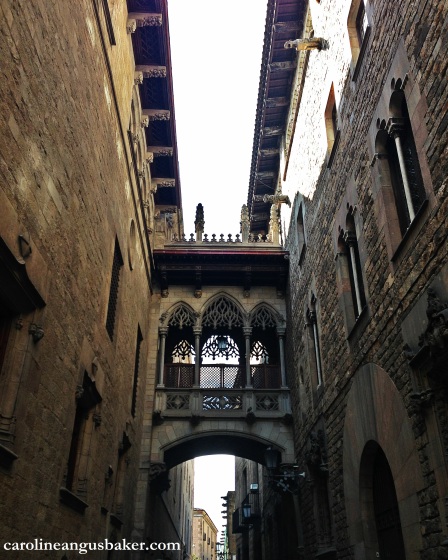

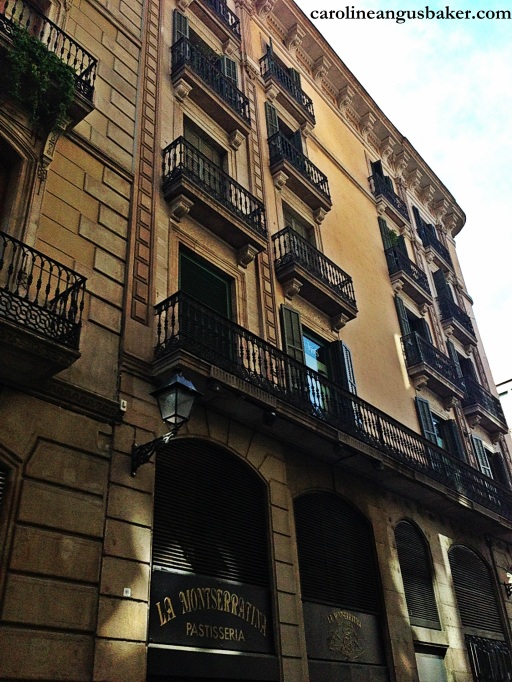
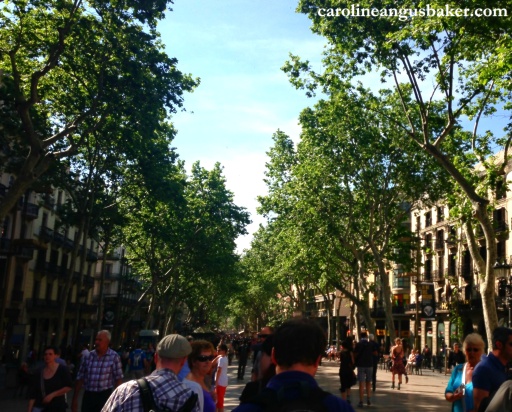
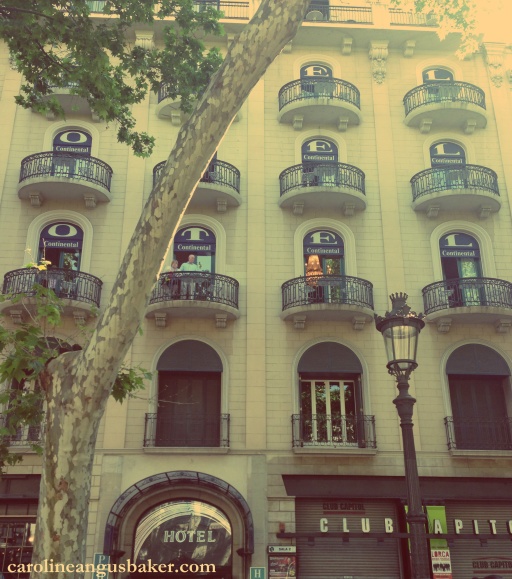




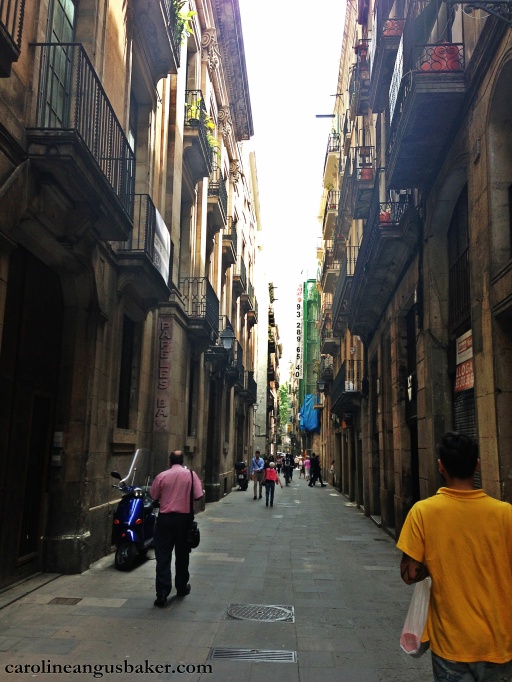
Excellent account of a guided tour. Might have to think about doing it myself!!
LikeLike
Even though I lived in Barcelona for almost 10 years I am intrigued by this post. ON my next trip I will take Nick Lloyd´s tour to fill in gaps in the information that I already have. Thanks for sharing!
LikeLike
While Barcelona was not my favorite city overall, I did truly appreciate all of its history. Thank you for all the detail regarding its history on this tour. It makes me want to return to give Barcelona a second chance.
LikeLike
I think the number of tourists is the thing that made me stop enjoying living in Barcelona. Whereas we could once go out and easily escape the tourists, after 10 years there it was just impossible.
LikeLike
Non-tourist neighborhoods are great. Getting out into Gracia or Sants (where I lived for years) and there’s not a tourist around. The beaches are another thing altogether…
LikeLike
You can also visit famed CNT militia leader Buenaventura Durruti’s grave on Montjuic. While it’s not a photo op, he was one of the great stories from the time. He died on the front in late ’36 and over half a million people flooded the procession route on its final pass through the city.
LikeLike